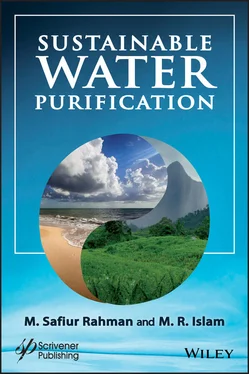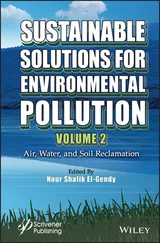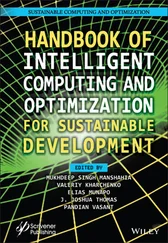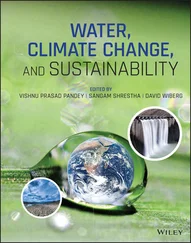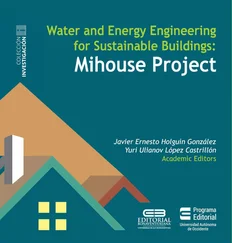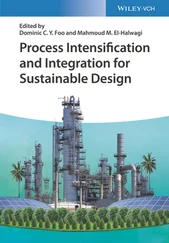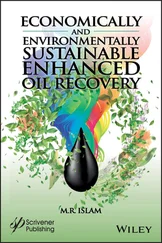1 Cover
2 Title Page
3 Copyright
4 Preface
5 1 Introduction1.1 Opening Remarks 1.2 Climate-Water-Food Nexus 1.3 Background 1.4 Insufficiency in Water Purification Processes 1.5 Introduction to Zero Waste Engineering 1.6 Scope of the Book 1.7 Organization and Introduction of the Chapters
6 2 Water Science2.1 Introduction 2.2 Unique Features of Water 2.3 Natural State of Matter 2.4 Source of Water and Its Role in Sustaining Life
7 3 Sustainability of Current Water Purification Technologies3.1 Introduction 3.2 Sustainability Criteria 3.3 Sustainability in the Information Age and Environmental Insult 3.4 Biological Processes 3.5 Chemical Precipitation 3.6 Membrane Separation 3.7 Ion Exchange 3.8 Ozonation 3.9 UV Radiation 3.10 Adsorption
8 4 Sustainable Drinking Water Purification Techniques4.1 Introduction 4.2 Natural Lifestyle 4.3 Natural Minerals 4.4 Solar UV Treatment 4.5 Natural Ozonation
9 5 Sustainable Purification Techniques for Agricultural Waters5.1 Introduction 5.2 Organic vs. Chemical Agricultural Practices 5.3 Removal of Heavy Metals 5.4 Removal of Heavy Metals Using Fish Scale 5.5 Solar UV Treatment 5.6 Bioremediation for Sustainable Purification of Water
10 6 Sustainable Purification Techniques for Industrial Wastes6.1 Removal of Radionuclides 6.2 Removal of Heavy Metals Precious Metals 6.3 Industry Lifestyle Change 6.4 The Energy/Water Crisis 6.5 Certain Sustainable Technologies
11 7 Summary and Conclusions7.1 Summary 7.2 Conclusions
12 References and Bibliography
13 Index
14 End User License Agreement
1 Chapter 1Table 1.1 The tangible and intangible nature of yin and yang (From Islam, 201...Table 1.2 Synergies between water and sustainable growth (modified from UN Wa...
2 Chapter 2Table 2.1 H 2O is more cohesive than H 2S, despite their similar structures, be...Table 2.2 Unique properties of water.Table 2.3 Thermal properties of ice (Website 1).Table 2.4 Vapour pressure ice.Table 2.5 Typical features of natural processes as compared to the claims of ...Table 2.6 True difference between sustainable and unsustainable processes.Table 2.7 Features of external entity (from Islam, 2014).Table 2.8 Inorganic contaminants found in groundwater.Table 2.9 Organic contaminants found in groundwater.Table 2.10 List of infectious agents potentially present in drinking water co...Table 2.11 Some major threats to groundwater*.
3 Chapter 3Table 3.1 Classification of source water, according to quantity of dissolved ...Table 3.2 List of spurious assumptions behind major UN findings.Table 3.3 Common ionic constituents contained in water (Nicholas P.C., 2002).Table 3.4 Select physical properties of ozone are listed.
4 Chapter 4Table 4.1 Complete description of the 5-element theory as applied in human ph...Table 4.2 Various leading causes of death to vital organs that govern the rel...
5 Chapter 5Table 5.1 Land use for various income growth.Table 5.2 Land use for various country classifications.Table 5.3 Transitions from natural to processed.Table 5.4 Sugar consumption for various regions/countries (from Islam et al. , ...Table 5.5 The Langmuir adsorption isotherm parameters and equation for adsorp...Table 5.6 Use of separation parameter, RL in getting information about the nat...Table 5.7 The Freundlich adsorption isotherm parameters and equation for adso...
6 Chapter 6Table 6.1 Sources of metals and heavy metals.Table 6.2 Classification of the procedures use by Al-Razi in book of secrets.Table 6.3 Mercury contents after cinnabar and HgCl 2administration for 10 day...Table 6.4 Mercury contents after cinnabar and HgS administration for 10 days ...Table 6.5 Abundance number for various elements present in the universe (from...Table 6.6 Per capita energy consumption (in TOE) for certain countries (From ...Table 6.7 Chemical composition of orange peel adsorbent by X-ray fluorescence...Table 6.8 Chemical and physical properties of banana peel used in the experim...Table 6.9 Physico-chemical characteristics of JPC. (From Bhatnagar et al. , 201...Table 6.10 The percentages of main elements in garlic peels by element analys...Table 6.11 Uptake capacities of various peel-based adsorbents for metals remo... Table 6.12Uptake capacities of various peel-based adsorbents for organic pollut...Table 6.13 Adsorption isotherm studies of different pollutants onto agricultu...
1 Chapter 1Picture 1.1 Humanity, civilization, environment and the cosmos are all conne...Figure 1.1 Water-fire yin yang, showing how without one the other is meaning...Figure 1.2 The Water-Food-Energy Nexus (Modified from Lal, 2013).Figure 1.3 The water-soil-atmosphere nexus.Figure 1.4 Water purification process.
2 Chapter 2Figure 2.1 Sustainability implies natural balance between water and energy a...Figure 2.2 Water carbon yin-yang.Figure 2.3 Energy at various temperatures.Figure 2.4 A small solute is compatible with water’s natural cages. A large ...Figure 2.5 Number of particles vs particle size.Figure 2.6 Colors and wave lengths of visible light.Figure 2.7 Artificial and natural lights affect natural material differently...Figure 2.8 Wavelength spectrum of visible part of sunlight. (From Islam et a ...Figure 2.9 Visible natural colors as a function of various wavelengths and i...Figure 2.10 Water is structured differently around two hydrophobes at differ...Figure 2.11 Energy–volume relationship of water, vs simpler materials. (left...Figure 2.12 Paradoxical behavior of water (from Woijciechowski et al. ).Figure 2.13 Temperature dependence of thermal conductivity of isolated (4, 0...
3 Chapter 3Figure 3.1 Percentage of population using unimproved drinking water sources ...Figure 3.2 Schematic diagram for surface water treatment process.Figure 3.3 Schematic diagram for waste water treatment process.Figure 3.4 Direction of sustainable and unsustainable technology (Khan and I...Figure 3.5 Flowchart of sustainability analysis of a new technology.Figure 3.6 World plastic production (From Statista, 2018).Figure 3.7 Annual per capita water consumption in metric ton in 2013 (from S...Figure 3.8 Sources of various fresh water withdrawals (from USGS, 2017).Figure 3.9 Schematic diagram for biological waste water treatment process.Figure 3.10 Biological waste water treatment process using sulfate reducing ...Figure 3.11 Schematic diagram for chemical precipitation in water and wastew...Figure 3.12 Membrane separation processes in water treatment plant.Figure 3.13 Membrane separation processes in water treatment.Figure 3.14 Membrane filtration classification.Figure 3.15 Relationship between pressure bar and membrane pore size (differ...Figure 3.16 Microfiltration water treatment facility.Figure 3.17 Inside of Microfiltration water treatment facility.Figure 3.18 Drinking water treatment 300 m 3/h using ultrafiltration in Grund...Figure 3.19 Inside of ultra-filtration Water Treatment Facility.Figure 3.20 Schematic diagram for nano filtration in water treatment plant....Figure 3.21 Nano filtration unit in water treatment plant.Figure 3.22 Inside of nano-filtration Water Treatment Facility.Figure 3.23 Schematic diagram for water purification systems using reverse o...Figure 3.24 Ion exchange resin used in water treatment processes.Figure 3.25 Ozonation process using in water treatment plant.Figure 3.26 UV systems for water treatment.Figure 3.27 UV Disinfectant systems in water treatment plant.Figure 3.28 Schematic illustration of heavy metals removal from waste water ...Figure 3.29 Rice husk/rice hulls.Figure 3.30 Coconut based best activated carbon.Figure 3.31 Hazelnut shell.Figure 3.32 Peanut husk.Figure 3.33 Fly ash.Figure 3.34 Coffee beans and residue (simulated).Figure 3.35 Pine bark chips.Figure 3.36 Lignin.Figure 3.37 Zeolite.Figure 3.38 Clay.
Читать дальше
